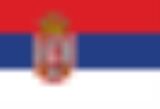
Krcevac
Encyclopedia
Krćevac is a village in the Topola
municipality of the Šumadija District
in Central Serbia
, located 3.9 km from Zagorica
and 5.2 km from Topola.
was/is densely wooded and so the village owes its name to the intense forest clearing effort that was undertaken when the area was settled. Local lore holds that the area of today's Krćevac burned for three months before the land became clear for farming.
In 2002, Serbs
constituted 98.7% of the population, Montenegrins 1.03%, Croats
0.12%, and Muslims
0.12%.
during the 1868-1883 period.
The Ottoman Turks
referred to Krćevac as Karađorđe's House of Hajduk
s (ajdučka kuća) due to the wooded areas of Krćevac serving as a safe haven for those who fought to abolish Turkish rule during the First Serbian Uprising
.
Topola
Topola is a town and municipality situated in the Šumadija region of Serbia. It was the place where Karađorđe, a Serbian revolutionary, was chosen as the leader of the First Serbian Uprising against the Ottoman Empire in 1804. The local St...
municipality of the Šumadija District
Šumadija District
The Šumadija District is located in the central part of Serbia. It has a population of 290,900, and the district seat is the city of Kragujevac...
in Central Serbia
Serbia
Serbia , officially the Republic of Serbia , is a landlocked country located at the crossroads of Central and Southeast Europe, covering the southern part of the Carpathian basin and the central part of the Balkans...
, located 3.9 km from Zagorica
Zagorica
Zagorica is a village in the municipality of Topola, Serbia. According to the 2002 census, the village has a population of 765 people....
and 5.2 km from Topola.
Etymology
The name "Krćevac" stems from "krčanje" which translates to "burning/clearing of forest". The region of ŠumadijaŠumadija
Šumadija is a geographical region in Serbia. The area is heavily covered with forests, hence the name...
was/is densely wooded and so the village owes its name to the intense forest clearing effort that was undertaken when the area was settled. Local lore holds that the area of today's Krćevac burned for three months before the land became clear for farming.
Demographics
According to the 1991 census data, the population was 794. According to the 2002 census, this had declined slightly to 775, composed of 636 adults, with an average age of 42.9 years (41.9 years among males and 43.8 years among females). There were 216 households in the village with an average of 3.59 members per household.In 2002, Serbs
Serbs
The Serbs are a South Slavic ethnic group of the Balkans and southern Central Europe. Serbs are located mainly in Serbia, Montenegro and Bosnia and Herzegovina, and form a sizable minority in Croatia, the Republic of Macedonia and Slovenia. Likewise, Serbs are an officially recognized minority in...
constituted 98.7% of the population, Montenegrins 1.03%, Croats
Croats
Croats are a South Slavic ethnic group mostly living in Croatia, Bosnia and Herzegovina and nearby countries. There are around 4 million Croats living inside Croatia and up to 4.5 million throughout the rest of the world. Responding to political, social and economic pressure, many Croats have...
0.12%, and Muslims
Bosniaks
The Bosniaks or Bosniacs are a South Slavic ethnic group, living mainly in Bosnia and Herzegovina, with a smaller minority also present in other lands of the Balkan Peninsula especially in Serbia, Montenegro and Croatia...
0.12%.
Historic Sites
Krćevac is home to a fountain built by Alexander Karađorđević on 29 September 1858. Karađorđević built the fountain on the land that he had known, and tended to, since childhood. The land was the same location of Karađorđe Petrović's farm fields. The land was sold by the House of ObrenovićHouse of Obrenovic
The House of Obrenović was a Serbian dynasty that ruled Serbia from 1815 to 1842, and again from 1858 to 1903. They came to power through the leadership of their progenitor Miloš Obrenović in the Second Serbian uprising against the Ottoman Empire, which led to the formation of the Principality of...
during the 1868-1883 period.
The Ottoman Turks
Ottoman Turks
The Ottoman Turks were the Turkish-speaking population of the Ottoman Empire who formed the base of the state's military and ruling classes. Reliable information about the early history of Ottoman Turks is scarce, but they take their Turkish name, Osmanlı , from the house of Osman I The Ottoman...
referred to Krćevac as Karađorđe's House of Hajduk
Hajduk
Hajduk is a term most commonly referring to outlaws, highwaymen or freedom fighters in the Balkans, Central- and Eastern Europe....
s (ajdučka kuća) due to the wooded areas of Krćevac serving as a safe haven for those who fought to abolish Turkish rule during the First Serbian Uprising
First Serbian Uprising
The First Serbian Uprising was the first stage of the Serbian Revolution , the successful wars of independence that lasted for 9 years and approximately 9 months , during which Serbia perceived itself as an independent state for the first time after more than three centuries of Ottoman rule and...
.

